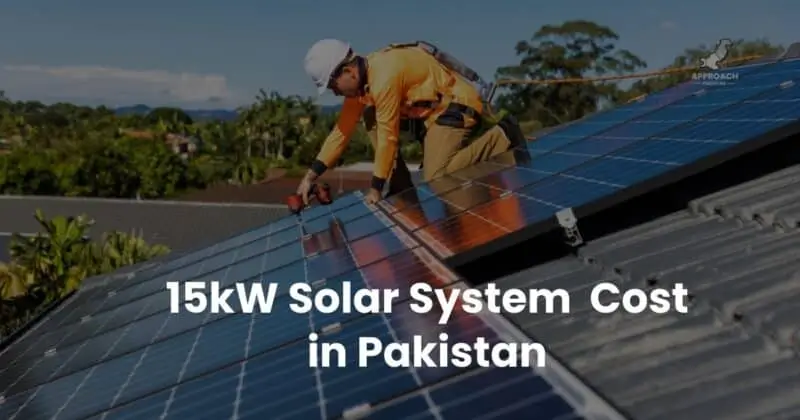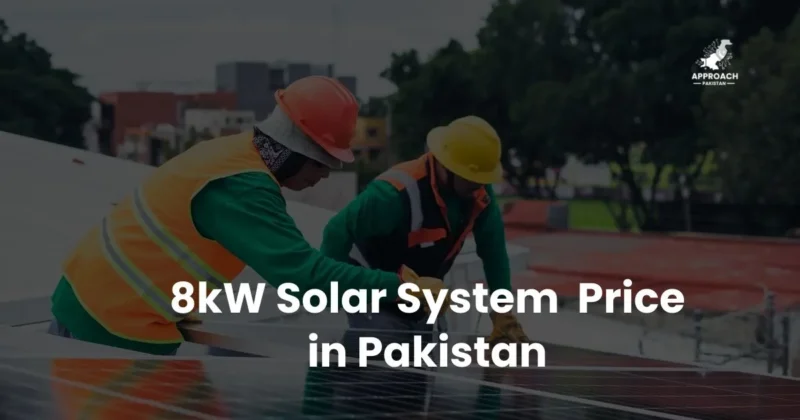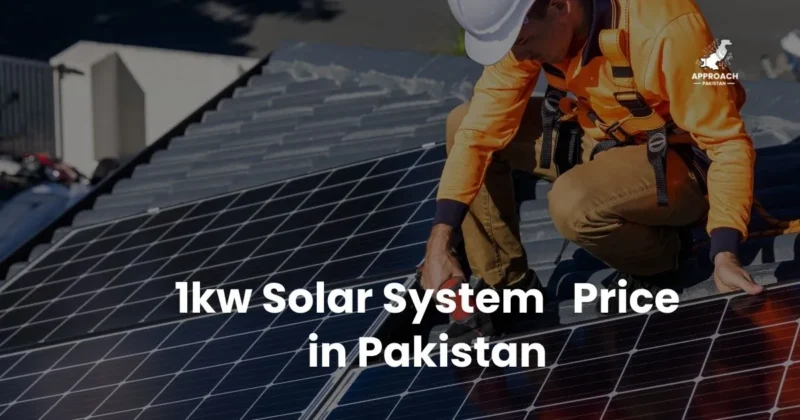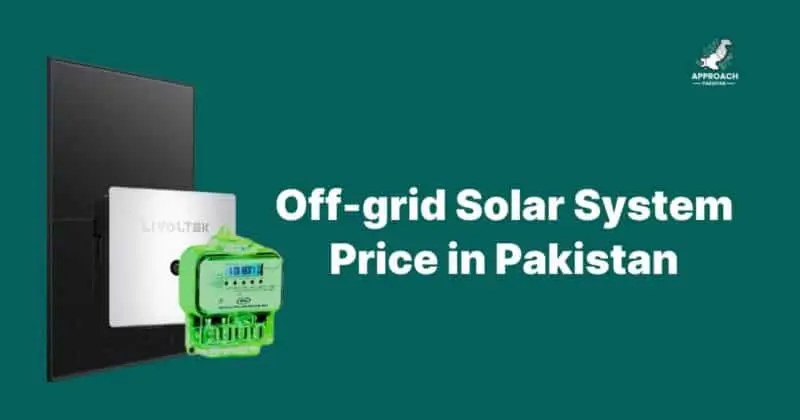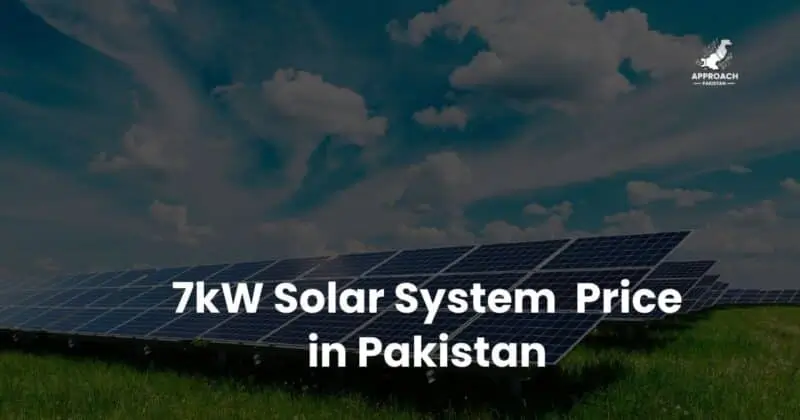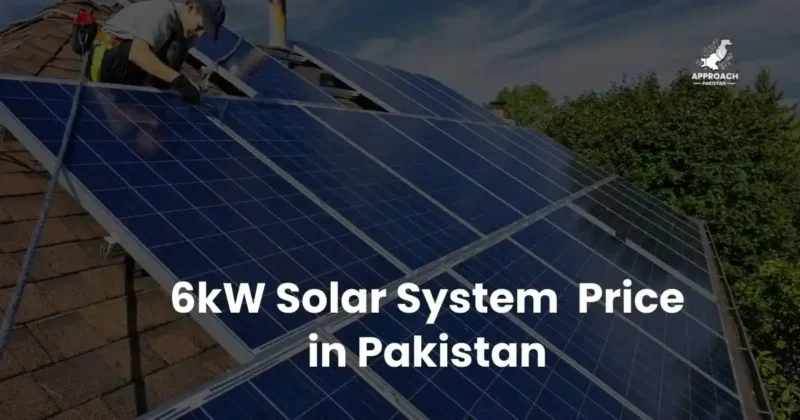30kW Solar System Price Pakistan 2025 | PKR 17-25 Lakh Guide
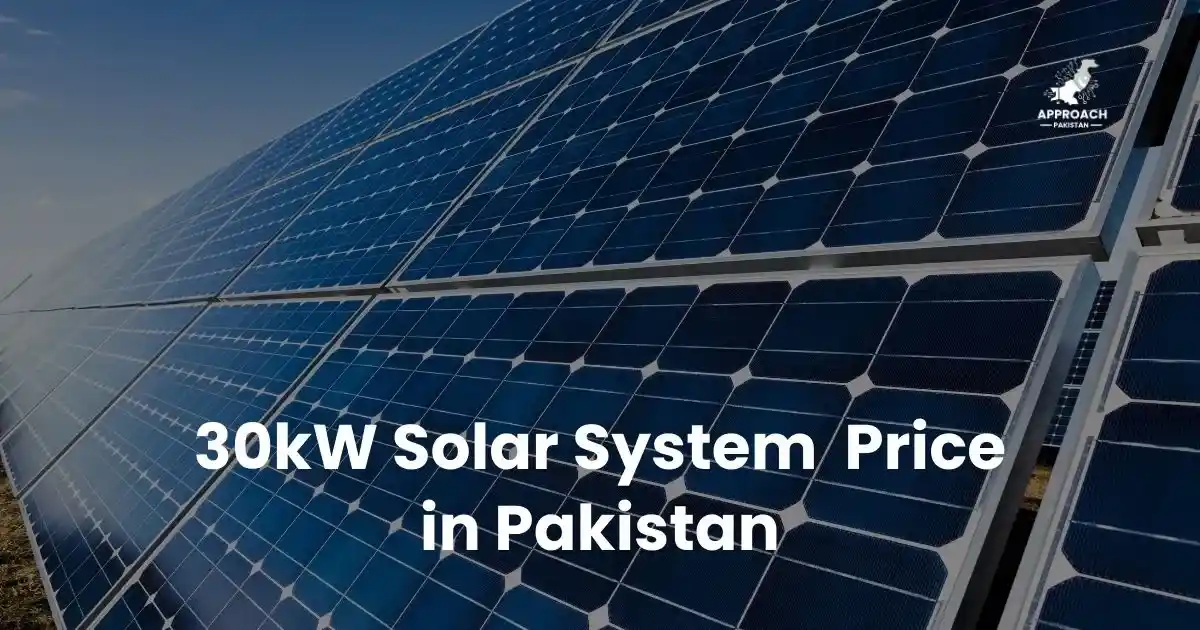
The price of a 30kW solar system in Pakistan ranges from PKR 1,700,000 to PKR 2,500,000 in 2025, depending on panel brand, inverter type, and installation complexity. This system generates 3,600-4,500 kWh monthly, offering 70-80% electricity bill reduction with 2-3 year payback period.
Are you tired of watching your electricity bills devour your monthly budget? Those PKR 50,000+ power bills aren’t just numbers on paper – they’re stealing your peace of mind. Every time the lights go out during load shedding, your business suffers and your family’s comfort disappears.
Here’s the thing about solar pricing in Pakistan – it’s like shopping in a maze blindfolded. One dealer quotes PKR 20 lakhs, another says PKR 25 lakhs, and nobody explains what you’re actually paying for. You’re left wondering if you’re buying the right system size or walking into a costly mistake.
I’ve spent years helping Pakistani families and businesses cut their electricity dependence. Today, I’ll break down everything about 30kW solar system pricing so you can make a confident decision. No hidden costs, no technical jargon – just straight facts that save you money.
30kW Solar System Benefits
1.1 Why Choose 30kW Solar Power?
A 30kW solar system is Pakistan’s sweet spot for large homes and small businesses. It’s big enough to power your entire operation yet affordable enough to see real returns. Think of it as your electricity independence declaration.
This system size handles 8 air conditioners, 35 fans, and 60 lights simultaneously. No more choosing between comfort and savings – you get both.
1.2 Market Context in Pakistan
Pakistan’s electricity crisis makes solar not just smart – it’s essential. Grid power costs have jumped 300% in five years. Meanwhile, solar panel prices dropped 40% globally. It’s like buying a car when petrol prices are rising but car prices are falling.
The government’s net metering policy lets you sell excess power back to the grid. Your roof becomes a mini power plant earning money while you sleep.
1.3 Target Audience
Who needs a 30kW solar system? Large families with multiple ACs, small factories, restaurants, retail stores, and agricultural operations. If your monthly electricity bill exceeds PKR 100,000, this system makes financial sense.
Commercial users love 30kW systems because they qualify for industrial tariff rates under net metering.
30kW Solar System Pricing Information
2.1 Current Market Prices (2025)
30kW solar system prices in Pakistan vary by quality tier:
- Budget Range: PKR 1,700,000 – PKR 1,900,000
- Mid-Range: PKR 2,000,000 – PKR 2,300,000
- Premium Range: PKR 2,400,000 – PKR 2,500,000
Don’t let sticker shock fool you. That PKR 20-25 lakh investment pays for itself in 2-3 years. After that, it’s pure profit for the next 22+ years.
2.2 Cost Breakdown Tables
Here’s where your money goes in a typical PKR 2,200,000 system:
| Component | Quantity | Cost (PKR) | Percentage |
| Solar Panels (Longi 565W) | 56 pieces | 901,600 | 41% |
| Inverter (30kW On-Grid) | 1 unit | 450,000 | 20% |
| Installation Labor | – | 150,000 | 7% |
| Mounting Structure | Complete | 200,000 | 9% |
| Protection & Wiring | Complete | 150,000 | 7% |
| Net Metering Setup | – | 180,000 | 8% |
| Earthing System | Complete | 75,000 | 3% |
| Miscellaneous | – | 93,400 | 5% |
2.3 Price Factors & Variables
What drives 30kW solar system pricing up or down?
Panel brand matters most. Chinese Tier-1 panels (Longi, Jinko) cost 15-20% more than local alternatives but last longer. It’s like buying a Toyota vs. a local car – you pay more upfront but save on maintenance.
Inverter technology affects price significantly. String inverters cost less but micro-inverters offer better performance in partial shade. Your roof’s shading conditions determine the best choice.
Installation complexity varies by location. Karachi’s coastal conditions require corrosion-resistant materials. Mountain areas need wind-load certified structures.
2.4 Financing Options
Making 30kW Solar Affordable:
Bank financing through SBP’s solar scheme offers 6-8% interest rates. Monthly installments range from PKR 25,000-35,000 for 5-7 year terms. Your solar savings often exceed loan payments from month one.
Several banks offer solar-specific loans:
- Meezan Bank: Up to PKR 30 lakhs, 7 years
- Bank Alfalah: Solar financing at 7.5% markup
- MCB: Green financing program
Leasing options let businesses claim tax benefits while avoiding upfront costs.analysis to understand automatic switching technology and dual-benefit pricing.
Technical Specifications of 30kW Solar System
3.1 System Components
Core components that make your 30kW system work:
Solar panels convert sunlight to DC electricity. Inverters change DC to AC power for your appliances. The mounting system holds panels at optimal angles. Protection devices prevent electrical faults.
Think of it like a car engine – each part has a specific job, but they work together smoothly.
3.2 Panel Requirements (55-85 panels)
A 30kW system needs 55-85 solar panels depending on wattage. Higher wattage panels mean fewer pieces but cost more per panel. It’s about finding the sweet spot for your roof space.
Popular panel configurations:
- 56 panels × 535W = 29.96kW
- 60 panels × 500W = 30kW
- 75 panels × 400W = 30kW
Modern 565W panels are the current favorite – fewer panels mean less installation time and lower labor costs.
3.3 Inverter Specifications
30kW inverter options for Pakistani conditions:
String inverters handle the entire system through one unit. They’re cost-effective for unshaded roofs. Power optimizers work well with partial shading but cost 20% more.
Top brands for Pakistan:
- Huawei: 98.4% efficiency, 10-year warranty
- Growatt: Pakistani support, competitive pricing
- Sungrow: Proven performance, global presence
- Sineng: Budget option, decent quality
3.4 Mounting & Installation
Getting panels on your roof safely:
Ground mounting works for factories with open land. Rooftop installation suits most homes and businesses. Ballasted systems work on flat roofs without penetrating the surface.
Installation takes 3-5 days for experienced teams. Weather delays can extend timelines during monsoon season.
30kW Solar System Energy Production & Capacity
4.1 Daily Output (120-150 kWh)
Your 30kW system produces 120-150 kWh daily in Pakistan’s sunny climate. That’s like having a small power plant on your roof. Summer production peaks at 150+ kWh while winter drops to 100-120 kWh.
Peak production happens between 10 AM – 2 PM when sun intensity is strongest.
4.2 Monthly Generation (3,600-4,500 kWh)
Monthly electricity production by season:
- Summer (May-August): 4,200-4,500 kWh
- Winter (December-February): 3,200-3,600 kWh
- Spring/Fall: 3,800-4,200 kWh
These numbers assume clean panels and optimal positioning. Dust accumulation can reduce output by 15-20% without regular cleaning.
4.3 Annual Production
A well-maintained 30kW system generates 45,000-50,000 kWh annually. That’s enough electricity to power 8-10 average Pakistani homes. The system produces maximum output in its first year, then degrades 0.5% annually.
After 25 years, you’ll still get 85% of original output – that’s 38,000+ kWh annually.
4.4 Load Capacity Analysis
What can 30kW actually power?
Peak capacity means you can run 30,000 watts simultaneously during sunny hours. At night or cloudy periods, you rely on grid power (on-grid) or batteries (off-grid).
Smart load management maximizes solar usage. Run heavy appliances like washing machines and water heaters during peak production hours.
Appliances & Usage
5.1 Supported Appliances List
A 30kW system comfortably powers:
| Appliance | Quantity | Power Consumption |
| Air Conditioners (1.5 ton) | 8 units | 12,000W |
| Ceiling Fans | 35 units | 2,100W |
| LED Lights | 60 units | 600W |
| Refrigerators | 6 units | 900W |
| LED TVs (55″) | 6 units | 600W |
| Washing Machines | 3 units | 1,500W |
| Water Pumps | 2 units | 1,500W |
| Total Load | 19,200W |
This leaves 10,800W capacity for other appliances or future expansion.
5.2 Commercial Applications
Perfect for Pakistani businesses:
Restaurants benefit from running multiple ACs, refrigeration, and cooking equipment during lunch/dinner rushes when solar production peaks. Retail stores can power lighting, ACs, and payment systems while selling excess electricity back to grid.
Small manufacturing units find 30kW ideal for running light machinery during daytime shifts. The system pays for itself faster with commercial electricity rates.
5.3 Industrial Use Cases
Light industrial applications:
Textile workshops can power sewing machines, cutting equipment, and facility lighting. Auto workshops benefit from running lifts, air compressors, and welding equipment during peak solar hours.
Cold storage facilities use 30kW systems for refrigeration during sunny periods, reducing grid dependency when electricity costs peak.
5.4 Agricultural Applications
Farming gets smarter with solar:
Tube wells for irrigation work perfectly with solar – when sun shines, water pumps. Poultry farms use solar for ventilation fans, lighting, and feed processing. Dairy farms power milking equipment and cooling systems.
The rural agricultural context makes 30kW systems especially valuable where grid electricity is unreliable.
Financial Analysis of 30kW Solar System
6.1 Monthly Savings (PKR 130k-200k)
Your electricity bill transformation:
Before solar: PKR 180,000 monthly electricity bill After solar: PKR 20,000-40,000 (reduced grid usage) Net savings: PKR 140,000-160,000 monthly
These savings compound as electricity rates increase annually. By year 5, you’re saving PKR 200,000+ monthly while your solar investment stays fixed.
6.2 Payback Period (2-6 years)
When does your investment break even?
Best case scenario (Commercial users): 2-2.5 years Typical residential: 3-4 years
Worst case (minimal usage): 5-6 years
Payback calculation: System cost ÷ Annual savings = Payback years
PKR 2,200,000 ÷ PKR 1,800,000 annual savings = 1.22 years (commercial rates) PKR 2,200,000 ÷ PKR 900,000 annual savings = 2.44 years (residential rates)
6.3 ROI Calculations
Return on investment that beats any bank:
25-year solar system ROI exceeds 400-600% for most users. Compare that to 8-12% bank returns. Your money works harder on your roof than in any savings account.
ROI breakdown:
- Years 1-3: Payback period
- Years 4-10: 300-400% returns
- Years 11-25: Pure profit phase
6.4 Long-term Benefits
Beyond payback – the profit phase:
After payback, every kWh is free electricity. Your system continues producing power for 20+ more years. With electricity inflation at 15-20% annually, your savings grow exponentially.
A 30kW system can save PKR 10-15 crores over its lifetime. That’s wealth creation through your roof.
Net Metering Benefits in 30kW Solar Systems
7.1 Net Metering Process
Turning your roof into a profit center:
Net metering lets you sell excess electricity back to the grid at retail rates. When your system produces more than you use, the excess flows to the grid. Your meter runs backward, crediting your account.
At night or during low production, you draw from your accumulated credits. It’s like having a free electricity storage system.
7.2 Grid Connection Benefits
Why staying connected makes sense:
Grid connection provides backup when solar production drops. You don’t need expensive batteries but still get energy security. The grid acts as your infinite battery bank.
During system maintenance or panel cleaning, grid connection keeps your operations running smoothly.
7.3 Excess Energy Sales
Making money from sunshine:
High-efficiency 30kW systems often produce more electricity than homes consume. Excess production gets sold at current electricity rates. Some users earn PKR 30,000-50,000 monthly from excess sales.
Commercial users with weekend shutdowns benefit most – systems produce electricity when buildings are empty.
7.4 Bill Reduction Strategies
Maximizing net metering benefits:
Time your heavy electricity usage during peak solar production. Run washing machines, water heaters, and manufacturing equipment between 10 AM – 3 PM. This maximizes self-consumption and reduces grid dependency.
Smart meters help track production vs. consumption patterns for optimal usage scheduling.
Brand Comparisons
8.1 Solar Panel Brands (Longi, Jinko, Canadian, JA Solar)
Tier-1 panels worth your investment:
Longi Solar: Current efficiency leader at 21-22%. Premium pricing but best performance per square meter. 25-year warranty with 0.45% annual degradation.
Jinko Solar: Best value proposition in Pakistan. Good efficiency (20-21%) with competitive pricing. Strong local support network.
Canadian Solar: Proven track record in harsh climates. Slightly lower efficiency but excellent durability. Popular for commercial installations.
JA Solar: Rising star with innovative half-cell technology. Competitive pricing with performance close to premium brands.
8.2 Inverter Options (Huawei, Growatt, Sungrow, Sineng)
Inverters that handle Pakistani conditions:
Huawei: Industry efficiency leader at 98.4%. Excellent monitoring app and global support. Premium pricing justified by performance.
Growatt: Strong Pakistani presence with local support. Good efficiency (97.8%) and competitive pricing. Popular for residential installations.
Sungrow: Chinese reliability with global presence. Robust design handles Pakistan’s voltage fluctuations well. Good warranty support.
Sineng: Budget option with decent quality. Lower efficiency (96.5%) but significantly cheaper. Suitable for cost-conscious installations.
8.3 Quality vs Price Analysis
Getting the best bang for your buck:
Premium panels cost 20-30% more but produce 15-20% more electricity over 25 years. The math usually favors premium brands for long-term ownership. Budget panels work for shorter payback requirements.
Inverter choice affects daily experience more than panels. Spending extra on a quality inverter with good monitoring makes system management easier.
FAQs

